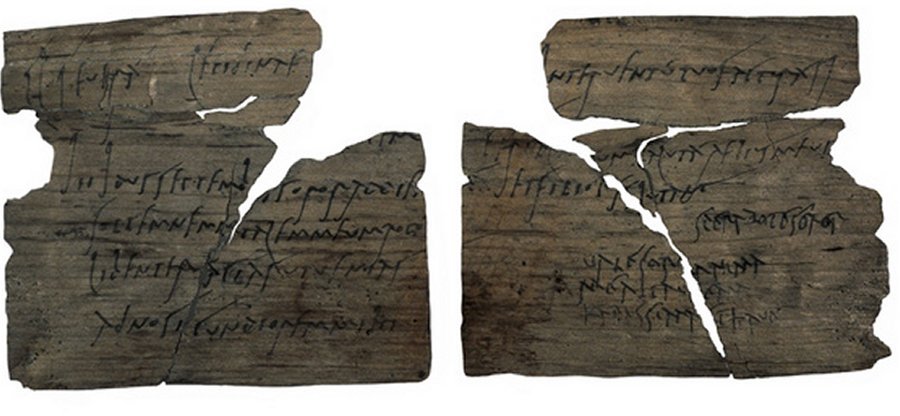Vindolanda Wooden Tablets: Ancient Military And Private Correspondence Left By Departing Roman Troops
A. Sutherland - AncientPages.com The fort of Vindolanda, one of the earliest Roman garrisons, built by the Roman army in England, is one of Europe's most important Roman archeological sites.
Vindolanda Roman fort. Image credit: Chris Gunns - CC BY-SA 2.0
It guarded the Stanegate, the Roman road from the River Tyne to the Solway Firth, and was situated behind Hadrian’s Wall, near the modern village of Bardon Mill in Northumberland, England.
It's worth mentioning that "literally the "Stone Road" was not just a road but a frontier system that predates Hadrian's Wall. The road links Corbridge to Carlisle and has a fort system that appears to repeat in a pattern of large - small - large - small, etc. The first fort in Cumbria from the east is Throp, one of the small ones. Note that a small fort at Crosby would be expected but one has not been found (yet) as wrote A Gazeteer, "The Roads Of Roman Britain",
Fort Vindolanda was originally constructed in turf and timber before Hadrian's Wall was built around 122 AD, and was repaired and rebuilt several times. Vindolanda garrison was destroyed and completely rebuilt at least nine times. Each community left its own unique features on the surrounding landscape.
To this famous Roman fort, there are related the Vindolanda Letters also known as the Vindolanda tablets, the oldest surviving, handwritten in Latin documents found in Britain. They are considered the best source of information about life on the northern frontier of Roman Britain.
Sandal was found at Vindolanda and is now on display in the Museum. Image credit: Colgill - CC BY-SA 4.0
The first post-Roman record of the ruins at Vindolanda was made by the antiquarian William Camden, in his Britannia (1586). Occasional travelers reached the site over the next two hundred years, and the accounts they left are useful because they predate much of the stone-stealing that has damaged the site.
Excavation of the fort began in 1970 and the tablets had not been recovered until 1973 when archaeologist Robin Birley unearthed them at the site of a Roman fort in Vindolanda, northern England.
Excavations yielded around 1,000 wooden writing tablets left by departing troops and well-preserved in the environment of the peat.
The texts of 752 tablets have been transcribed, translated, and published but archaeologists still find new tablets of Vindolanda. Credits: British Museum.
Most of the 752 Vindolanda letters were written during the period 92-102 AD and some of them are dated from 103 to 130 AD.
Written in ink on postcard-sized sheets of wood, due to a lack of papyrus), the longer documents were tied together by punching a hole in the corner. The writing tablets used the local woods – birch, alder, or oak taken from young trees.
The letters enable us to imagine community life and give a unique insight into the Roman official military correspondence, which demonstrated the army’s work assignments, efficiency, the soldiers’ food, and how they did spend their time off.
Many of the letters are strictly private, such as one recorded on the tablet 346, which reveals the following message:
‘I have sent you ... pairs of socks from Sattua, two pairs of sandals, and two pairs of underpants.’ It was obviously a bit cold for soldiers on the northwest frontier of the Roman Empire.
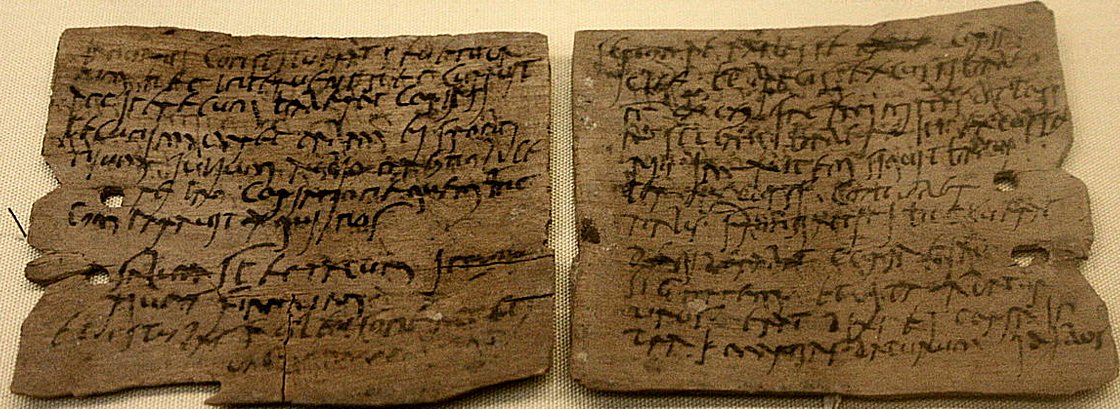 Letter from Octavius to Candidus concerning supplies of wheat, hides, and sinews. Credits: British Museum
Letter from Octavius to Candidus concerning supplies of wheat, hides, and sinews. Credits: British Museum
In one letter (tablet 291) Claudia Severa invites her sister Sulpicia Lepidina to her birthday party held in 100 AD.
"On 11 September, sister, for the day of the celebration of my birthday, I give you a warm invitation to make sure that you come to us, to make the day more enjoyable for me by your arrival… I shall expect you, sister. Farewell, sister, my dearest soul, as I hope to prosper, and hail."
The men stationed at Vindolanda fort were Germans writing in Latin, serving the Roman army in England. Through these letters recorded on sheets of wood, these people remained connected with other soldiers and their families living across the Empire.
This impressive collection of letters includes a list of household goods, an official account of troop strength, a memorandum on the customs of the Britons, a letter of recommendation to the provincial governor, a birthday invitation from the wife of the garrison commander, and a letter from one soldier rebuking another for not writing more often.
There are also official reports, administrative accounts of the garrison, and personal letters.
Written by – A. Sutherland AncientPages.com Staff Writer
Updated on September 22, 2022
Copyright © AncientPages.com All rights reserved. This material may not be published, broadcast, rewritten or redistributed in whole or part without the express written permission of AncientPages.com
Expand for referencesReferences:
Birley R. Vindolanda: A Roman Frontier Fort on Hadrian’s Wall
More From Ancient Pages
-
 Kiln Was Invented In Mesopotamia Around 6,000 B.C.
Ancient History Facts | Mar 7, 2018
Kiln Was Invented In Mesopotamia Around 6,000 B.C.
Ancient History Facts | Mar 7, 2018 -
 Incredible 5,000-Year-Old Temple Complex In Orkney Could Re-Write History Of Scotland
Civilizations | Jul 30, 2014
Incredible 5,000-Year-Old Temple Complex In Orkney Could Re-Write History Of Scotland
Civilizations | Jul 30, 2014 -
 Treasure Hunters Encounter Something Unexplained In The Arizona Mountains
Featured Stories | Apr 7, 2022
Treasure Hunters Encounter Something Unexplained In The Arizona Mountains
Featured Stories | Apr 7, 2022 -
 Evidence Of Lost Advanced Ancient Technology In Babylon
Civilizations | Dec 4, 2018
Evidence Of Lost Advanced Ancient Technology In Babylon
Civilizations | Dec 4, 2018 -
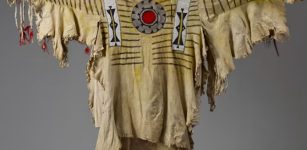 Historic Event – Exeter Museum Returns Ceremonial Dress Of Famous Chief Crowfoot To Canada’s Siksika People
Artifacts | May 20, 2022
Historic Event – Exeter Museum Returns Ceremonial Dress Of Famous Chief Crowfoot To Canada’s Siksika People
Artifacts | May 20, 2022 -
 Medieval Sword Found In The Sea Off The Carmel Coast Was Probably Used In Combat 800 Years Ago
News | Aug 4, 2023
Medieval Sword Found In The Sea Off The Carmel Coast Was Probably Used In Combat 800 Years Ago
News | Aug 4, 2023 -
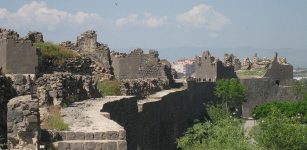 1,700-Year-Old Underground Temple Of Mithras Unearthed In East Anatolia, Turkey
Archaeology | May 10, 2017
1,700-Year-Old Underground Temple Of Mithras Unearthed In East Anatolia, Turkey
Archaeology | May 10, 2017 -
 What Is The Hidden Meaning Of The 15,000-Year-Old Rock Art In Arnhem Land?
Featured Stories | Jan 12, 2024
What Is The Hidden Meaning Of The 15,000-Year-Old Rock Art In Arnhem Land?
Featured Stories | Jan 12, 2024 -
 Ancient Syriac Epitaphs Discovered In Tomb Of Priest Monoha Shed New Light On The Assyrian Empire
Archaeology | Dec 23, 2019
Ancient Syriac Epitaphs Discovered In Tomb Of Priest Monoha Shed New Light On The Assyrian Empire
Archaeology | Dec 23, 2019 -
 10 Great Ancient Mysteries Of Africa
Civilizations | Mar 12, 2017
10 Great Ancient Mysteries Of Africa
Civilizations | Mar 12, 2017 -
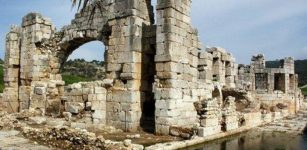 City Of Patara: Long History Of Wars And Visits Of Prominent Figures Of Ancient World
Archaeology | Jul 9, 2020
City Of Patara: Long History Of Wars And Visits Of Prominent Figures Of Ancient World
Archaeology | Jul 9, 2020 -
 Ephemeral Evidence Of Mediterranean Mobility – Boats, Migration, And The Central Mediterranean Passage In Focus
Archaeology | Dec 23, 2021
Ephemeral Evidence Of Mediterranean Mobility – Boats, Migration, And The Central Mediterranean Passage In Focus
Archaeology | Dec 23, 2021 -
 Interbreeding With Modern Humans Wiped Out Neanderthals’ Y Chromosomes 100,000 Years Ago
Archaeology | Sep 28, 2020
Interbreeding With Modern Humans Wiped Out Neanderthals’ Y Chromosomes 100,000 Years Ago
Archaeology | Sep 28, 2020 -
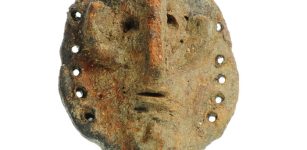 Unique Ancient Figurine Puzzles Scientists – Was She An Unknown Pre-Historic Water Goddess?
Archaeology | Jul 21, 2022
Unique Ancient Figurine Puzzles Scientists – Was She An Unknown Pre-Historic Water Goddess?
Archaeology | Jul 21, 2022 -
 Magnetic Compass Was Invented In Ancient China
Ancient History Facts | Mar 18, 2016
Magnetic Compass Was Invented In Ancient China
Ancient History Facts | Mar 18, 2016 -
 Inchbrayock Stone: Pictish Samson Stone Carved With Biblical Symbols And Scenes
Artifacts | Jan 21, 2019
Inchbrayock Stone: Pictish Samson Stone Carved With Biblical Symbols And Scenes
Artifacts | Jan 21, 2019 -
 Controversial Hollow Earth Theory – Scientific Facts Presented By Researchers – Part 1
Featured Stories | Jun 21, 2019
Controversial Hollow Earth Theory – Scientific Facts Presented By Researchers – Part 1
Featured Stories | Jun 21, 2019 -
 Stone Tools Reflect Three Waves Of Migration Of The Earliest Homo Sapiens Into Europe
Archaeology | May 4, 2023
Stone Tools Reflect Three Waves Of Migration Of The Earliest Homo Sapiens Into Europe
Archaeology | May 4, 2023 -
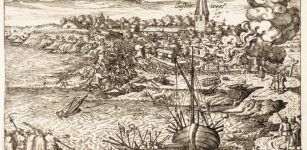 On This Day In History: Battle of Oosterweel Was Fought – On Mar 13, 1567
News | Mar 13, 2017
On This Day In History: Battle of Oosterweel Was Fought – On Mar 13, 1567
News | Mar 13, 2017 -
 Legend Of Ancient Princess Thone Pan Hla Who Is Believed To Haunt Pyay In Myanmar
Featured Stories | Aug 2, 2016
Legend Of Ancient Princess Thone Pan Hla Who Is Believed To Haunt Pyay In Myanmar
Featured Stories | Aug 2, 2016



